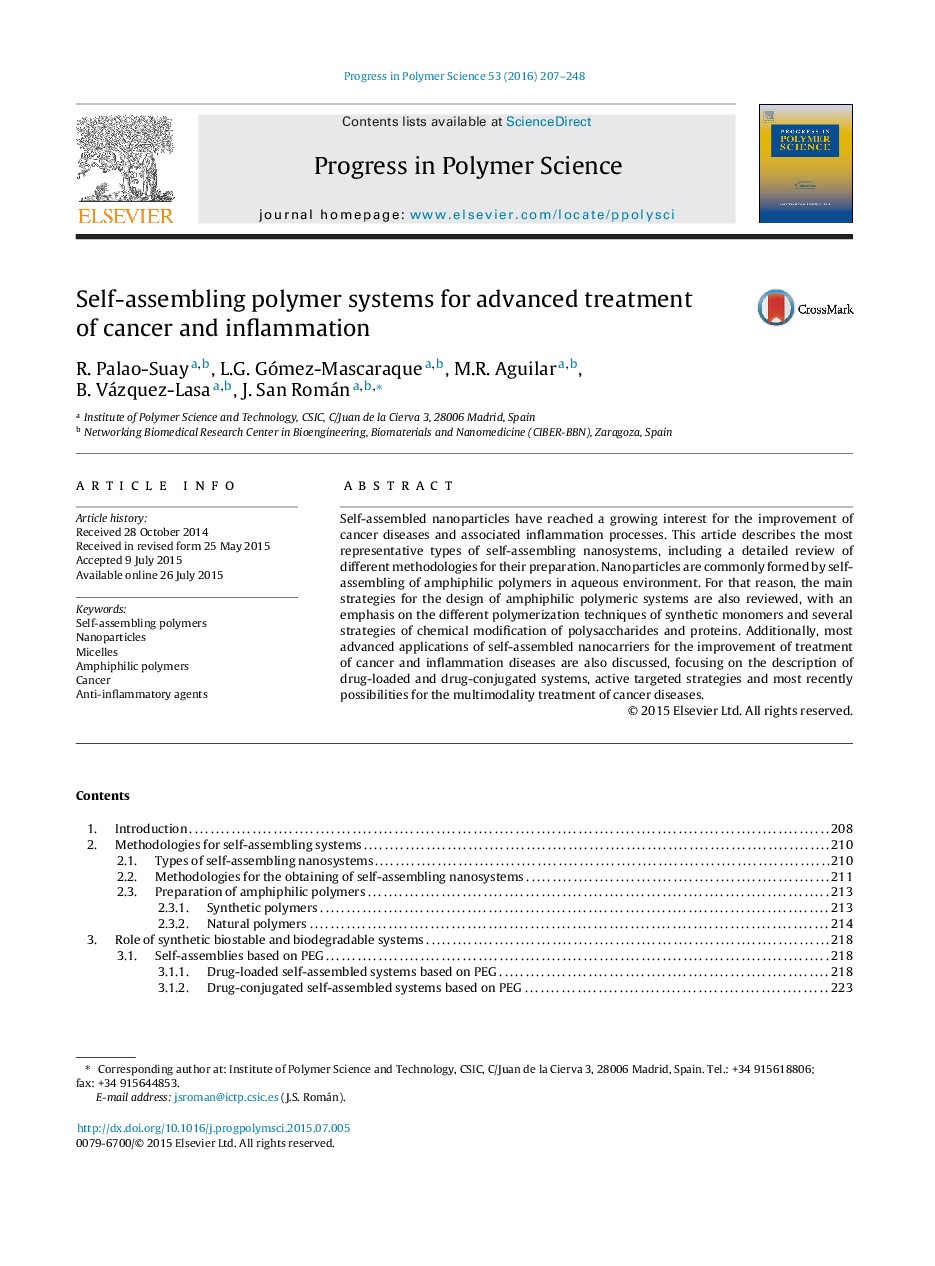| Article ID | Journal | Published Year | Pages | File Type |
|---|---|---|---|---|
| 5207986 | Progress in Polymer Science | 2016 | 42 Pages |
Self-assembled nanoparticles have reached a growing interest for the improvement of cancer diseases and associated inflammation processes. This article describes the most representative types of self-assembling nanosystems, including a detailed review of different methodologies for their preparation. Nanoparticles are commonly formed by self-assembling of amphiphilic polymers in aqueous environment. For that reason, the main strategies for the design of amphiphilic polymeric systems are also reviewed, with an emphasis on the different polymerization techniques of synthetic monomers and several strategies of chemical modification of polysaccharides and proteins. Additionally, most advanced applications of self-assembled nanocarriers for the improvement of treatment of cancer and inflammation diseases are also discussed, focusing on the description of drug-loaded and drug-conjugated systems, active targeted strategies and most recently possibilities for the multimodality treatment of cancer diseases.
